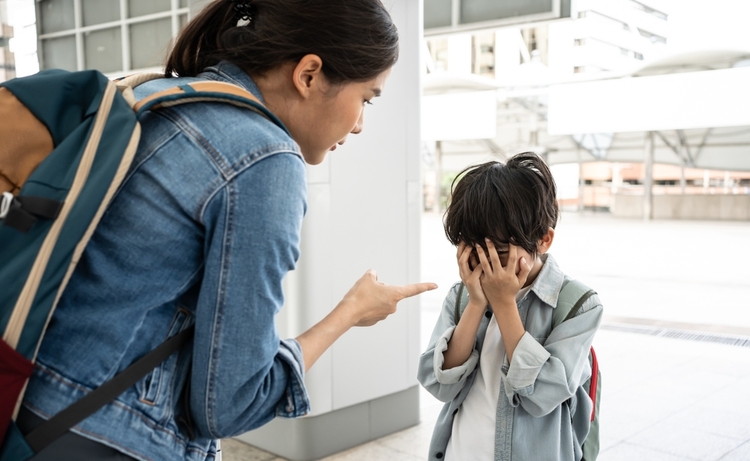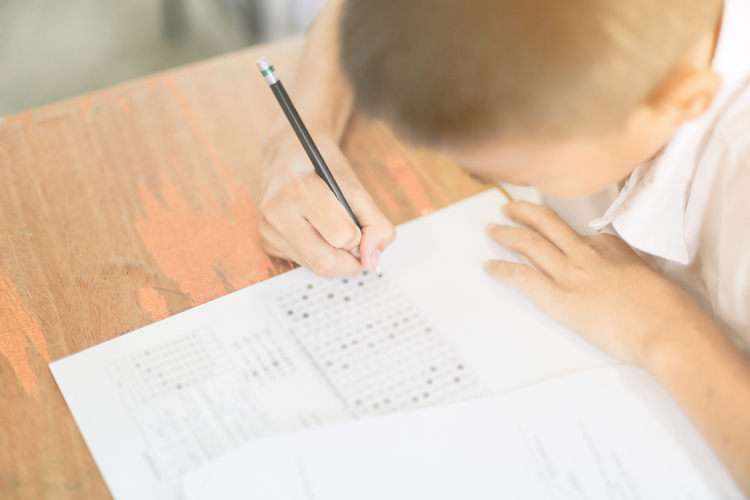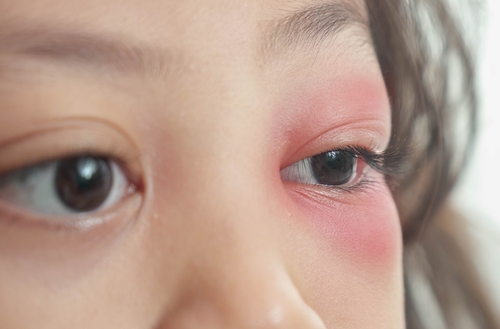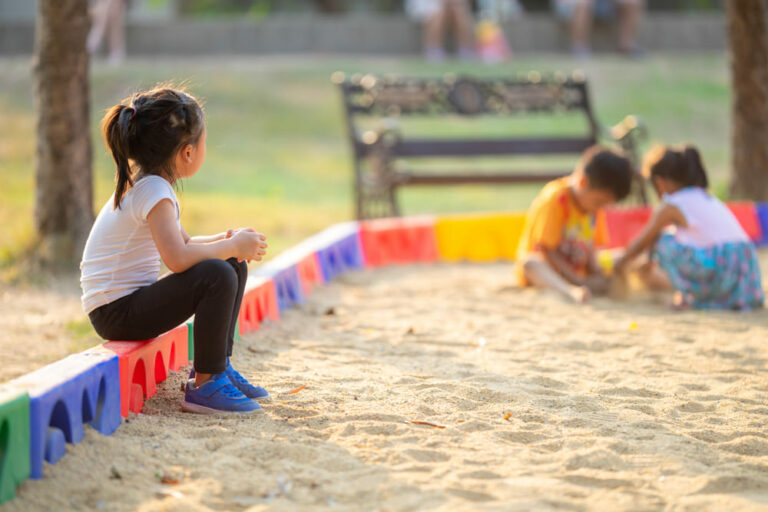Categories

I’m by Your Side
Written by: Stage and TV scriptwriter Cheung Fei Fan On a Saturday morning, I took my five-and-a-half-year-old son and three-and-a-half-year-old daughter to volunteer for flag selling for the first time. The little rascals were initially thrilled, but after the excitement wore off in three minutes, both of them started clamoring to go home. As parents, we of course understood; firstly, the weather was hot, and young children have limited patience; secondly, the streets were bustling with traffic and pedestrians rushing back and forth, and with their small statures, they were soon lost in the crowd. Passersby hurried on their way, paying no attention to them. The two little “emperors,” who are usually the center of attention, probably experienced being ignored for the first time in their lives. As a father, I secretly cheered, thinking this was a perfect opportunity for them to understand that they are not the center of the world. At the same time, it could also let them experience what it means to “every grain of rice is hard-earned.” My wife and I observed from the sidelines, only intervening when absolutely necessary, letting the two little ones freely explore. Watching them go from being scared and disappointed to trying, failing, then helping each other, trying again, and finally succeeding, seeing the satisfied smiles on their faces when they received praise from passersby, my wife couldn’t help but tear up. Coincidentally, that same evening, director Owen Jay invited my spouse and me to the premiere of his new

Hot-tempered parents
Written by : Marriage and Family Therapist Rachel Ng Children easily become timid, reticent, and lack confidence when dealing with hot-tempered parents. However, some children may learn to solve problems in an aggressive manner, mimicking their parents. Obviously, both patterns are detrimental to a child’s personality development! Can parents improve their hot-tempered nature? Personality tendencies and life stress It’s undeniable that a part of one’s temperament is innate, which we cannot overlook. Just like children have different traits, some parents are naturally more sensitive, react quickly, and have lower adaptability. These types of parents, when entering the stage of raising children, often coincide with a critical period in their career development. Due to their low adaptability, they easily become anxious due to changes in the environment, work demands, and their own career advancement, requiring a lot of time and energy to cope. At home, the various temperaments of children and their growing needs already pose many challenges to parents. Therefore, parents who are impatient and have low adaptability can easily lose their temper, using it as a way to vent their unease and attempt to control the situation, hoping to restore order and reduce their own anxiety. Trauma from the Family of Origin Some parents are not inherently impatient, but if they experienced neglect, abuse, and damage to their self-esteem and personality during their upbringing, these parents are likely to perceive their child’s disobedience, tantrums, and other challenging behaviors as personal rejections, triggering their own childhood traumas and leading to

Parental education, willing to learn and dare to do
Written by: Dr. Chi-Yuen TIK, Chief Executive, The Hong Kong Institute of Family Education In the journey of parental education, I love to listen to parents share their experiences and reflections on disciplining their children. Exchanging and encouraging each other is the most comprehensive content of parenting education. There is no place in the world that requires parents to pass an exam before they can have children. Everyone is learning as they go, realizing things later on, and gradually becoming “experienced” parents. Children have expectations of you, society has demands on you, and parents themselves cannot afford to be lazy, so they actively learn theories and techniques for disciplining their children. I remember a father sharing how he dealt with his son’s request to buy sneakers when the son was in the eighth grade. He told his son he would give him four hundred dollars. Naturally, the son felt it was not enough, but the father told him that four hundred dollars could buy a pair of sneakers, and if it wasn’t enough, the son would have to figure it out himself. In the end, the son bought the sneakers he wanted, but the price was saving his breakfast and lunch money to make the purchase. He said although his son was happy with the new sneakers, he also experienced days of hunger, and in the future, he would think carefully before making a purchase. The father expressed that it was tough for him to see his son go through

Besides good grades and getting into a good school, what else do children need?
Written by: Ms. Carmen Leung, Director of Curriculum Development, Steps Education Many parents ask what holistic education is. From the perspective of the wisdom of the Chinese people that has been passed down for thousands of years, it is the cultivation of a child’s “morality, intelligence, physical fitness, social skills, and aesthetics”; from the perspective of psychologists, it is the cultivation of a child’s multiple intelligences; from the perspective of education, it is not only the pursuit of knowledge, but also the cultivation of a child’s values, attitudes, artistic and cultural accomplishments, interpersonal skills, problem-solving, and thinking abilities. To put it more simply, from the perspective of ordinary people, holistic education is about making sure the child is well-rounded, with good grades, many friends, positive thoughts, and capable in music, sports, and art. Do you want your child to achieve holistic development? Multiple intelligences are divided into seven categories, with innate and acquired factors each playing a role. Today, let’s introduce the commonly mentioned multiple intelligences from the perspective of psychology. The “Theory of Multiple Intelligences” was proposed by Professor Howard Gardner of Harvard University in 1983. He found that intelligence can be divided into at least seven types, which are linguistic intelligence, logical-mathematical intelligence, spatial-visual intelligence, musical intelligence, bodily-kinesthetic intelligence, interpersonal intelligence, and intrapersonal intelligence. When it comes to “intelligence,” parents might think of genius or innate talent. Is intelligence innate, or is it nurtured? In fact, a person’s intelligence is partly innate and partly nurtured. Every child’s innate

Regain parents’ confidence
Written by: Au Ka Leung, Registered Social Worker, Hong Kong Family Welfare Society In 2012, it was the first year of the Hong Kong Diploma of Secondary Education Examination (HKDSE). Two years prior, I was already deeply concerned about how Form 3 students and their parents were dealing with the selection of subjects and the progression to higher education. Today, some students and parents have chosen to study abroad, leaving the local education scene. Of course, most students and parents have to face these changes, and I can only guide them with the limited public information and analysis available. For me and one of the parents, this journey is one of building confidence. This parent has been asking questions about the new education system and exams over the past two years. In fact, he has become an expert by constantly updating himself with the latest information online, yet he still frequently asks teachers and social workers if his support and guidance for his children are appropriate. Over time, I realized that he is indeed a good father, but he lacks confidence in his son and his parenting skills. His confidence is built on his son’s academic performance, behavior, and home environment. When discussing academic performance and behavior, one might think of exam scores and the child’s attitude towards revision. But what about the home environment? Due to his long working hours, this father only returns home after 9 pm, which is dinner time. He often mentions seeing his son pretending

Delaying Tactics for Cultivating Children’s Patience
Written by: Pang Chi Wah, Registered Educational Psychologist, New Horizons Development Centre Hong Kong is a society abundant in material wealth, but due to the overabundance of resources, when children have needs in life, parents quickly provide them with ample supply, allowing them continuous satisfaction. However, parents satisfying their children’s needs too quickly can have a negative impact on them, failing to cultivate their ability to endure, and over time, their patience may become limited. Utilizing Emotional Intelligence to Cultivate Children’s Patience Delaying gratification or the fulfillment of life’s needs is an important part of developing emotional intelligence (EQ). If parents are accustomed to quickly satisfying their children’s needs but then complain about their lack of patience, such criticism is unfair to the children, as their patience has simply not been nurtured. How can one delay the fulfillment of children’s needs? To train children’s emotional intelligence, the secret is “neither using the cane nor the carrot,” meaning that neither corporal punishment nor frequent rewards are necessary. Instead, patience and the ability to wait are cultivated through daily life experiences. Parents can try the following examples: Example 1: When parents and children go to a dim sum restaurant, there is no need to let the children eat whatever they like immediately. Parents can ask the children to wait for 5 minutes after finishing one basket of dim sum before eating a second type; or they can require the children to wait until the parents have eaten a portion before they can

Be a parent with multiple expressions and poses!
Written: Founder & Volunteer Director of Good Love Passion, Lam Ho Pui Yee When a child is around 6 months old, they start babbling, constantly making sounds and single words. They also enjoy playing with toys that make sounds. However, even before they learn to speak, they already understand how to communicate with the people around them using crying, sounds, facial expressions, gestures, or body language. In fact, children first learn to communicate with people using facial expressions and gestures, then they learn verbal communication, and finally, they learn to communicate through text. Therefore, accurately recognizing other people’s facial expressions helps in assessing their emotions and attitudes, thus influencing a child’s cognitive development, emotional development, and social skills. Parents’ facial expressions, actions, and postures are often what children find most attractive. Children observe and respond to their parents’ facial expressions and emotions. For example, a gentle expression can make them feel comfortable communicating with you, a smile can boost a child’s confidence in expressing themselves, and a nod from parents indicates acceptance. Through these developments, children gradually understand, learn, and care about people’s emotions. Different parts of the body express emotions in various ways, and expressions can be categorized into facial expressions, body expressions, and verbal expressions. To establish good parent-child communication, parents need to pay attention to several aspects: 1.When children cannot clearly see their parents’ facial expressions, it is recommended to use actions as a substitute for speech responses. For example, hugging them tightly, giving them a kiss,

Besides having fun, what else is there to travel for
The new school year has begun, and children can happily return to school. I wonder how everyone spent their recent summer vacation? Some parents choose to take a long holiday with their children, both for quality family time and to relax and unwind. Do you have any other reasons? Some may say that traveling can broaden a child’s horizons. Indeed, ‘traveling ten thousand miles is better than reading ten thousand books.’ If children have firsthand experiences, it’s believed that they can have a deeper understanding of the knowledge they acquire. For example, when children learn about the ‘Great Wall of China,’ visiting the site can make them truly appreciate the greatness of this architectural wonder in human civilization. When I choose travel destinations, I also consider whether they align with my daughter’s learning materials. For instance, when she’s studying different types of animals, I incorporate visits to zoos during our travels, allowing her to interact with various animals, which is far better than just learning from books or TV. I value the few days spent traveling because it provides an extended period of quality time for my daughter and me. By observing carefully, you can gain a deeper understanding of your child. When my daughter was younger, I paid special attention to the following aspects during our travels: (1) How she interacts with strangers: During our travels, my child encounters different unfamiliar people. How does she behave? Does she proactively greet elders? Can she respond politely and appropriately to their

Is your eye sensitive when the seasons change? What is keratoconus?
Source: Ophthalmologist,Yu Wang Hon During seasonal changes, children often rub their eyes, and their eyes may become watery, mostly due to eye allergies. About 10 to 20 percent of children experience eye allergies, and the severity can vary depending on the season, with more severe cases occurring in the fall and winter. Common symptoms when children have eye allergies include redness of the eyes, eye swelling, frequent eye rubbing, dark circles under the eyes, and excessive tearing. Sometimes, there may also be swelling of the eyelids and conditions similar to eczema on the eyelids. Typically, children with eye allergies may also have conditions like skin eczema, asthma, or nasal sensitivities. The causes of eye allergies are often related to genetics, but they can also be influenced by changes in weather, humidity, and temperature. Additionally, air pollution, dust mites in the home, and owning pets are common contributing factors. In fact, for the majority of individuals with eye sensitivity, it doesn’t affect their vision. However, a small percentage of children may have more severe eye sensitivity that persists beyond seasonal variations. In some cases, the cornea may become damaged or scarred, leading to vision impairment. As for keratoconus, it’s a corneal disorder where the curvature of the cornea, which is typically stable, continuously deepens in a small percentage of individuals. In the long term, even with eyeglasses or contact lenses, vision cannot be corrected, and surgery or other treatments may be necessary. Presently, for the treatment of keratoconus, a procedure involving

Does a child having few friends indicate tendencies toward autism or social disorders?
Source : Education Expert, School Supervisor,Wu Shan-ying Parents often worry about their children and ask, “Have you made any friends at school?” However, when the child responds with “I don’t have any friends” or consistently mentions the same friend, parents may begin to worry if their child has tendencies toward autism or social disorders. In reality, some children have been this way since childhood. They may have a preference for playing with objects or toys rather than socializing with peers. Even in higher grades, they might immerse themselves in activities like building puzzles, engaging in quiet activities, or conducting experiments independently, showing a strong focus, but not necessarily an inclination to play with others. These children are introverted but not necessarily autistic. Just like adults, some adults may not be talkative, but they can be attentive and observant. They may not cast a wide social net, but they might have a few close and long-lasting friendships. These are aspects of personality. The second scenario is that some children, even if they enjoy playing with others, tend to prefer interacting with older peers or even adults. They might like to hang out with teachers, engage in conversations with teachers, but not necessarily enjoy playing with their same-age peers. From a teacher’s or parent’s perspective, it can be easy to perceive this as a social problem. These situations often occur, especially among gifted or academically inclined children. Typically, normal children begin to grasp the concept of friendship around the ages of 4

